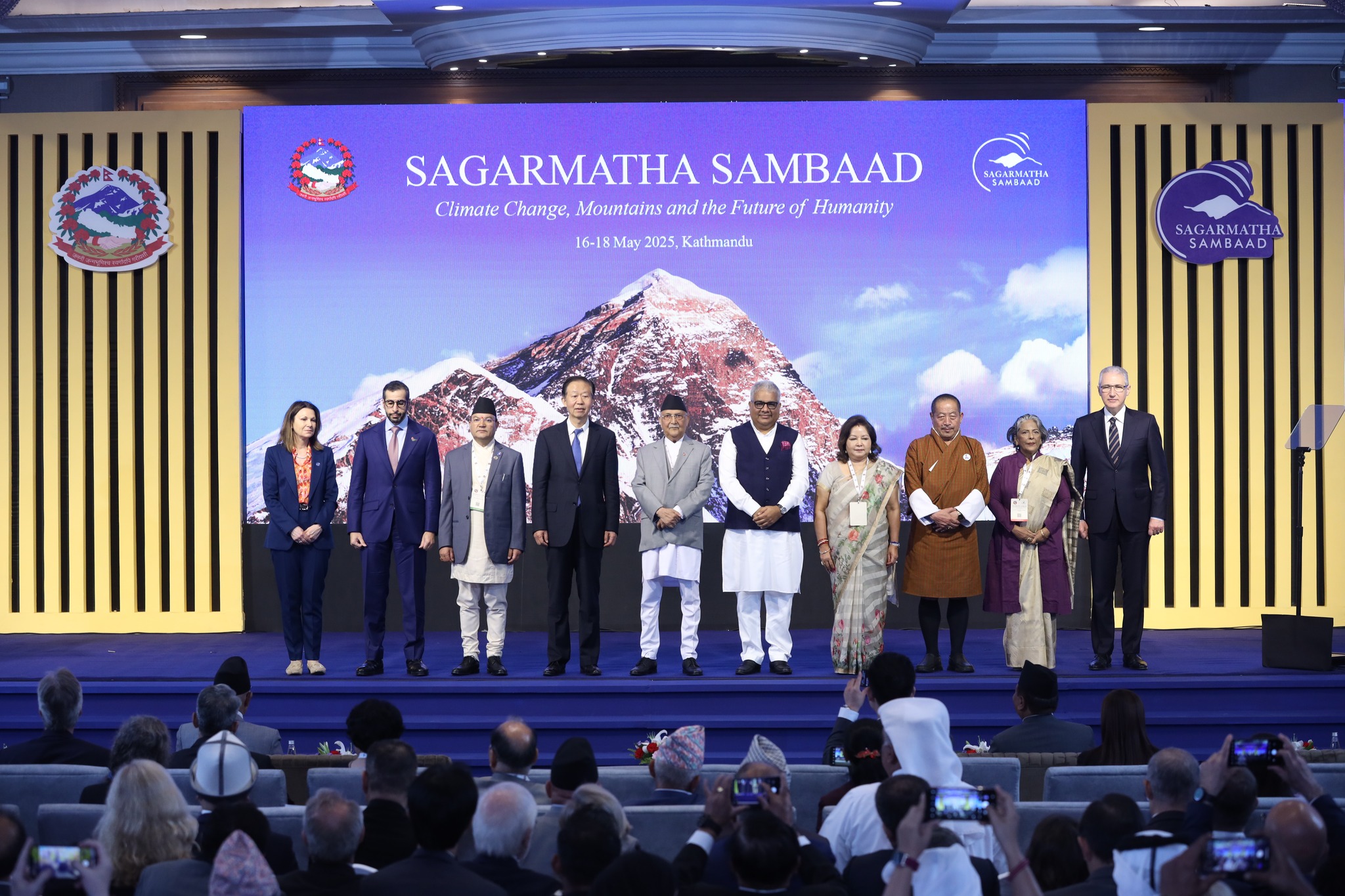

KATHMANDU: Beneath the Himalayas’ awe-inspiring peaks, Nepal hosted its first Sagarmatha Sambaad from May 16 to 18, 2025. Inaugurated by Prime Minister KP Sharma Oli in Kathmandu, the summit aimed to position Nepal as a leading voice for the world’s most fragile regions in an era of intensifying climate vulnerability.
Despite its noble ambitions, the event faltered—it went largely unnoticed by major international media outlets and suffered from a diluted, unfocused agenda. As the world prepares for COP30 in Brazil this November, Nepal’s ability to elevate the voices of mountain nations remains uncertain.
Nepal’s vision for the Sambaad
Originally conceived in 2019 and delayed by the pandemic, Sagarmatha Sambaad was envisioned as a Himalayan Davos—a platform for inclusive global dialogue rooted in Nepal’s tradition of balance, compassion, and holistic well-being.
Organized with support from civil society, academics, and development partners, the summit brought together youth leaders, scientists, and policymakers to debate ideas like mountain-specific climate funds, renewable energy investment, and culturally rooted resilience solutions.
For Nepal, a country with negligible carbon emissions but immense vulnerability, this was meant to be a megaphone for its climate pain: “Save our melting mountains.”
Mountains on the frontlines
The Himalayas are more than scenic wonders—they are the water towers of Asia, feeding rivers that sustain over two billion people. Yet they are warming at double the global rate.
Since 1971, Nepal’s average temperature has risen by 2.5°C. Between 1980 and 2010, it lost a quarter of its glacial area. Springs are drying up—70% in western Nepal have already vanished—forcing rural women to walk hours for water.
The consequences are stark:
The human toll is rising, particularly for indigenous communities reliant on mountain resources. Economically, Nepal is projected to lose 2.2% of its GDP annually by 2050, with $47 billion needed for adaptation—money far beyond its reach.
Sambaad’s Outcomes and Setbacks
The summit ended with the “Sagarmatha Call for Action”—a 25-point declaration urging emission cuts, a 1.5°C limit, and urgent finance for mountain nations. But it offered no timelines, accountability, or binding commitments.
International engagement was thin. Neither the India, U.S., the EU, nor China sent top leaders. UN Secretary-General António Guterres addressed via video, but his words felt ceremonial.
The timing was strategic—2025 is the UN’s “Year of Glaciers”—yet without strong partners or media traction, the Sambaad’s global influence was muted. Even domestically, attention was diverted by the tragic Humla flood, which underscored climate urgency but overshadowed the summit’s message.
Nepal’s struggle for climate leadership
Despite its moral high ground, Nepal’s climate diplomacy suffers from weak coalitions and unclear messaging. Unlike AOSIS (the Alliance of Small Island States), which commands global headlines with its existential plea— “Save our sinking homes”—Nepal’s “Save our melting mountains” remains abstract and under-amplified.
Nepal has yet to build a strong “mountain bloc” with Bhutan, Peru, Kyrgyzstan, or others, leaving it isolated in negotiations. Its outreach strategy is underdeveloped: while island nations show storm surges and drowning villages, Nepal’s disappearing glaciers and dried springs lack the same visual resonance.
Missed opportunity—or first step?
Sagarmatha Sambaad was a necessary but flawed beginning. Poor coordination, minimal media strategy, and diluted messaging turned what could have been a global rallying cry into a muted appeal.
Yet the urgency remains. The Himalayas are melting, and their fate will shape Asia’s future. With COP30 around the corner, Nepal still has a chance to sharpen its message, forge alliances, and demand mountain-specific action.
A path forward
For the next Sambaad to succeed, Nepal must:
The mountains are calling
Sagarmatha Sambaad was a stumble, but not the end. With sharper vision and stronger alliances, Nepal can transform it into a powerful platform for the world’s mountain nations.
The Himalayas are not just Nepal’s heritage—they are Asia’s lifeline. If the world ignores Sagarmatha’s call today, it may soon face its silence.